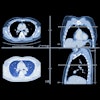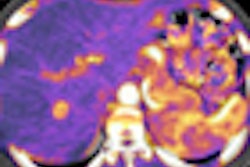Monday, November 30 | 11:35 a.m.-11:45 a.m. | VC21-15 | Room S103CD
Pulmonary embolism (PE) is the third most common cause of cardiovascular death, with approximately 650,000 cases reported each year. While CT angiography (CTA) is the modality of choice, it is over-ordered, costly, and produces high radiation exposure."Our study focused on determining the positivity rate of CTA, and whether thromboembolic risk-factor assessment can accurately indicate the pretest probability of PE," said Dr. Mark Mamlouk from the University of California, Irvine. "We did a retrospective chart review of 2,003 patients suspicious of having PE using statistical regression analysis. Additionally, we analyzed the role of D-dimers."
More than 90% of the patients had a negative CTA, he said. Without thromboembolic risk factors, it was extremely unlikely (1.3%) to have a positive CTA. "Furthermore, with the combination of no risk factors and negative D-dimer results, the risk became extremely low. The study suggests that CTA use can be markedly reduced, resulting in cost-savings and decreased radiation exposure," he said.




















